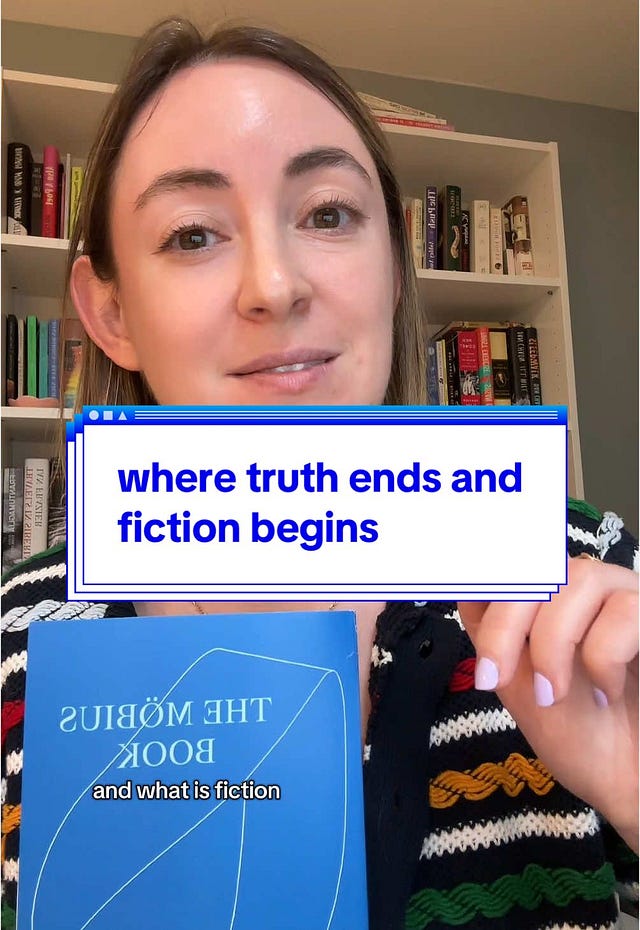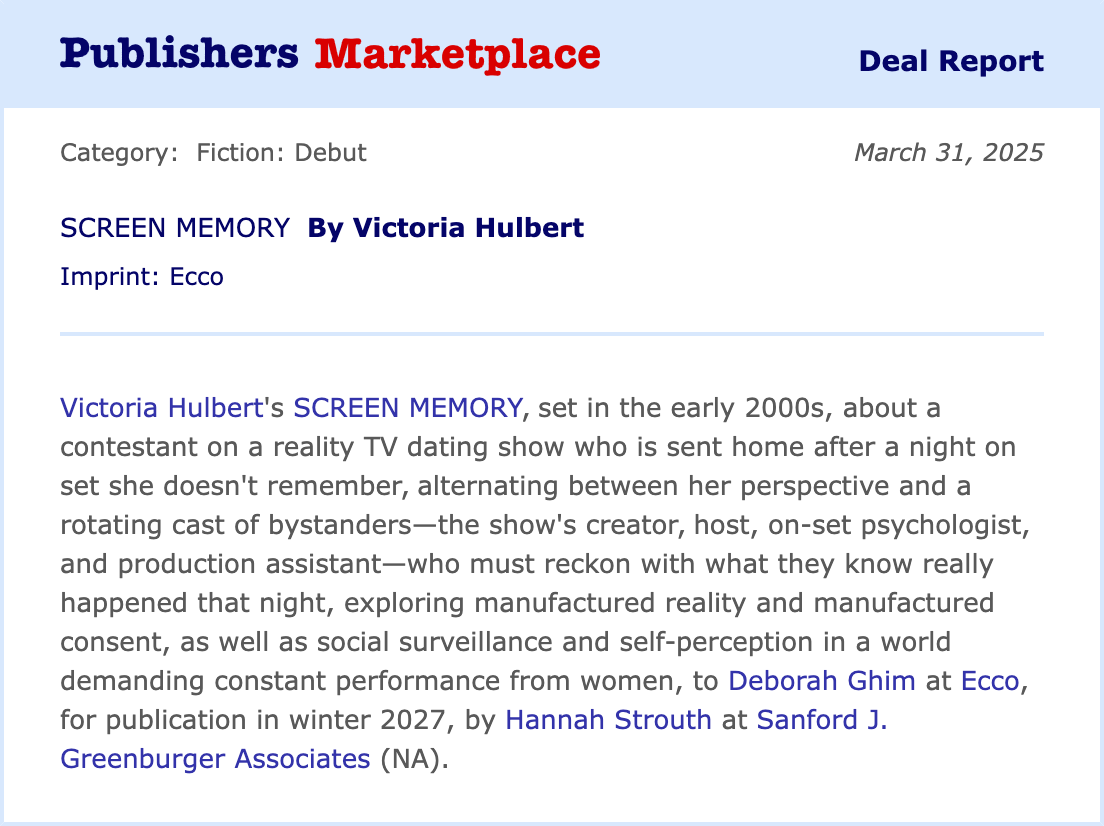the form is the twist
When my agent Erin was in town last month, she told me I should watch The Pitt with Noah Wyle.
I watched ER as a child (one year at Thanksgiving, when we had to go around and say what we were thankful for, I said “ER”), but I haven’t watched any other medical shows in the last thirty years. I’ve never seen an episode of Grey’s Anatomy or Scrubs or House.
The Pitt takes place in an underfunded emergency department of a Pittsburgh hospital. Noah Wyle plays Dr. Robby, the senior attending physician who is trying to keep his shit together as he saves lives and manages a team of residents and interns and nurses—most of whom are keeping secrets from him.
The writing is great, and the performances are excellent, but what makes the show stand apart from other medical dramas is its designing principle: season one unfolds in real time over the course of a single shift.
Episode one starts the clock at 7 a.m. We learn that these characters are working a twelve-hour shift—Dr. Robby even sends one resident home an hour early because she’s had a rough day at the office—so the expectation is that the season will last twelve episodes.
But then, literally at the eleventh hour, there’s a shocking audience reveal. The shift isn’t close to ending. Everything is about to get much worse. Four more episodes follow.
This is a great show to watch if you’re studying plot structure, but what I want to zero in on this week is how the form of the show is the twist.
I can imagine the show’s creator Scott Gemmill coming up with the idea to have the season unfold over the course of a single shift. The show 24 did something similar in 2001. It’s a clever idea, but is there a way to connect the designing principle of the shift to the storyline? Where does the plot come crashing through the constraints of the shift?
The designing principle is what organizes the story as a whole. It is the internal logic of the story, what makes the parts hang together organically so that the story becomes greater than the sum of its parts. It is what makes the story original.
— John Truby

The designing principle of my gothic novel is a crumbling Hollywood mansion, where a millennial approaching forty must get up close and personal with the generation coming to replace her. In the draft that went on submission in September 2023, I had a shocking third-act twist.
Nine months later, after my novel finally sold to Ballantine, I had a conversation with my editor Jesse, who told me, “I’m not saying you have to change the twist. It just isn’t yet connected to the house.”
The house had to become the plot twist.
I spent the next five months rewriting the third act and that one note from him made my novel 1000% better.
Authors of commercial fiction (thrillers, mysteries, romances, horror) understand the conventions of their respected genres: the twist is the unexpected killer. The twist is how the couple finds their way back together after the third-act breakup. The twist is Amy Dunne is alive. The twist is that the character you grew to trust is actually a dangerous threat. The twist is how Paul Sheldon escapes Annie Wilkes’s prison. Genre writers know their audience expects twists and turns in the plot.
Literary novelists have a more uneasy relationship with plot structure—they want to avoid cliché and tropes. They want to subvert reader expectations, instead of giving readers what they want. They aren’t trying to write a novel that anyone would describe as “thrilling.”
Listen, I sympathize with your ambivalence. You want to write something totally original and unique and you also want “at auction” in your PM screenshot. To write a gothic novel, I had to learn how to write a mystery (I wanted to learn how to write a mystery) and I struggled with which genre conventions to follow, and which to subvert.
For you, my literary novelists, your twist can be your form!
John Truby says most stories don’t have a designing principle. “They are standard stories, told generically. That’s the difference between a premise, which all stories have, and a designing principle—which only good stories have. The premise is concrete; it’s what actually happens. The designing principle is abstract; it is the deeper process going on in the story, told in an original way.”
It’s the difference between:
Premise: A medical drama set in a Pittsburgh emergency department
Premise + designing principle: A medical drama set in a Pittsburgh emergency department that unfolds in real time over the course of a single twelve-hour shift, until an eleventh-hour citywide emergency changes everything
Premise: An unemployed thirty-nine-year-old woman accepts a job from a man she hasn’t seen in twenty years, and tries to resurrect her career
Premise + designing principle: An unemployed thirty-nine-year-old woman accepts a job from a man she hasn’t seen in twenty years, managing a D-list hype house in his crumbling Hollywood mansion, where she is forced to get up close with the generation coming to replace her, in order to resurrect her career
The designing principle of Catherine Lacey’s next book is that it’s a mermaid: half memoir, half novella.
 Tiktok failed to load.
Tiktok failed to load.Enable 3rd party cookies or use another browser
As Emily Helck, owner of The Lost Bookshop, once put it to me, books with designing principles are easy to talk about (and recommend). Books with designing principles stand out in agent and editor inboxes, too.
I went through some recent book deal announcements, so I could show you more examples of designing principles.
Like The Pitt or 24, a book can use time as a designing principle:
The designing principle can be the unique perspective(s) from which the story is told.
Adolescence is another recent show with a designing principle: each harrowing episode is a single shot.
I love teaching designing principle—it’s a technique that can really elevate a project above its peers. Memoirs can have designing principles, too; I wrote about them here. If your book has one, I would include it in the 1 - 2 sentence pitch that opens your query letter. Remember what Truby said about premise + designing principle.
Have you read a book recently with a designing principle? Let us know in the comments!
Difficult
Congratulations to my client Jillian Turecki, who sold her second book to Harper One this week! On the very first call I had with Jillian in 2022, she already knew that she wanted to write a book about growing up as the daughter of Stanley Turecki, author of The Difficult Child. I love my job.
Chat Room
My next Chat Room will be with book scout and BookTok strategist
. Alyssa does consulting on BookTok similar to what I do—but she specializes in romance and women’s fiction (whereas I specialize in lit fic). I love her Substack and know we will have a fun conversation! Bring all your questions about BookTok.💎 Diamond medallion members of Attention Economy will receive the zoom link by email on the morning of April 21. 💎












This really unlocked something for me. The idea that form itself can be the twist—especially in literary fiction, where we tend to shy away from fireworks in favor of… vibe—is such a refreshing reframing. It’s also a cheat code for originality without getting lost in “but what’s my plot?” spirals.
Your example of The Pitt reminded me of Station Eleven’s nonlinear structure. On paper, it’s a post-apocalyptic novel. But the designing principle—tracing human connection across timelines through a Shakespeare troupe and a comic book—is the reason it feels transcendent. Like the narrative architecture is itself a kind of emotional alchemy.
Also love how this reframes “genre vs literary” tension. Designing principle is the middle path: structure as art and strategy.
I recently read Molly Giles’ Lifespan, a memoir where each short chapter is a year of her life captured in one defining scene, from 1945 to 2023. Her designing principle changes the book from a collection of flash essays into an autobiography.